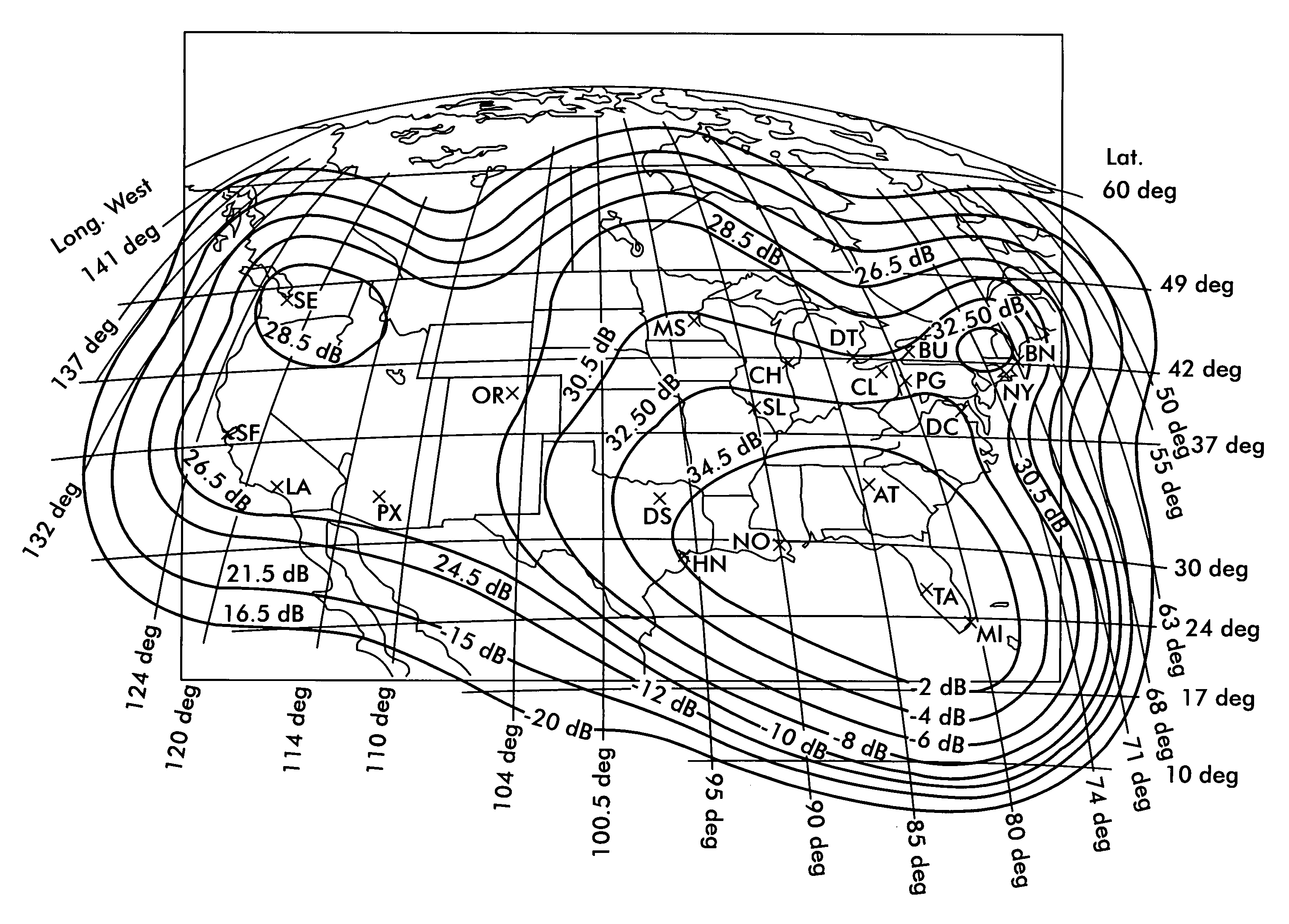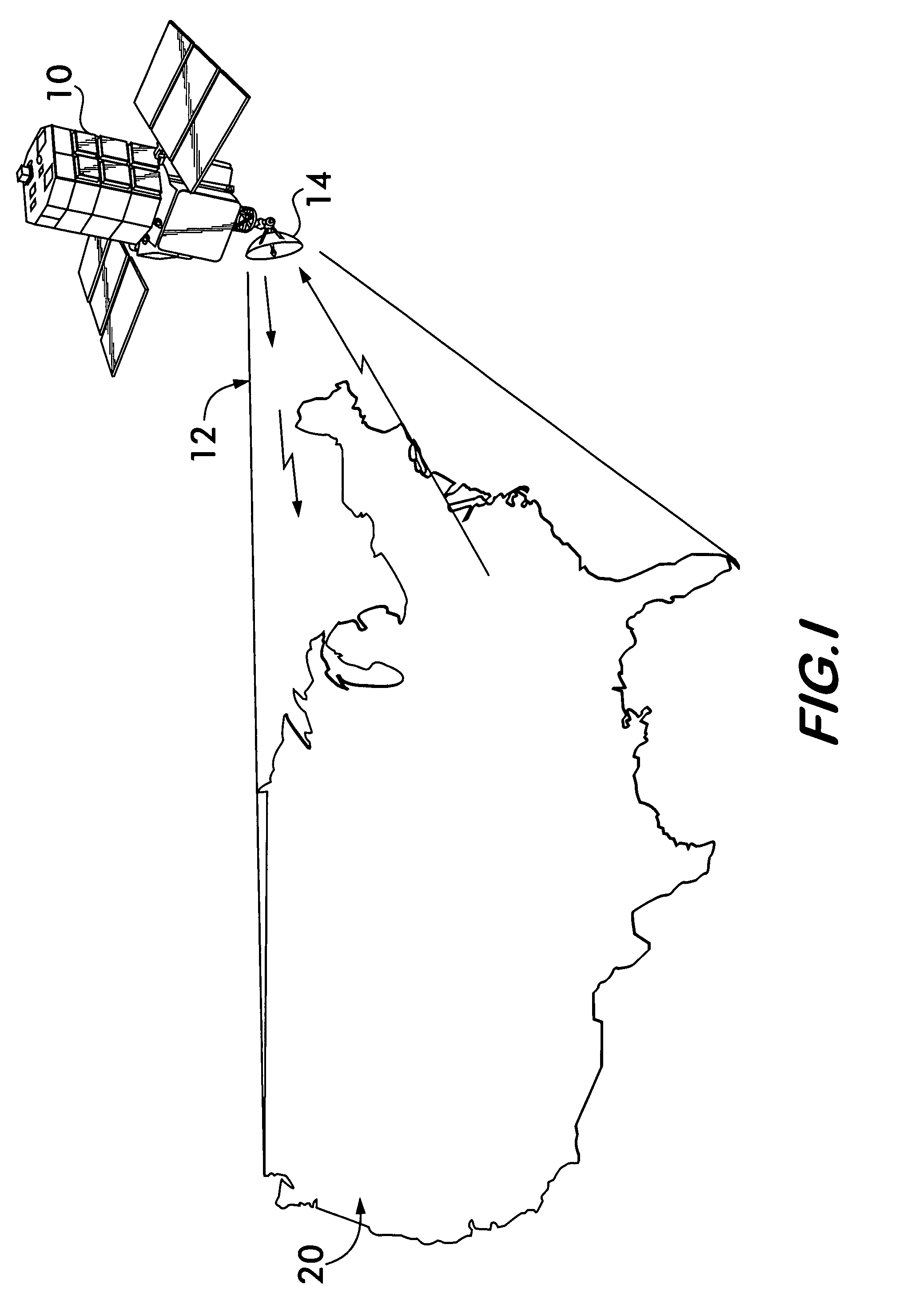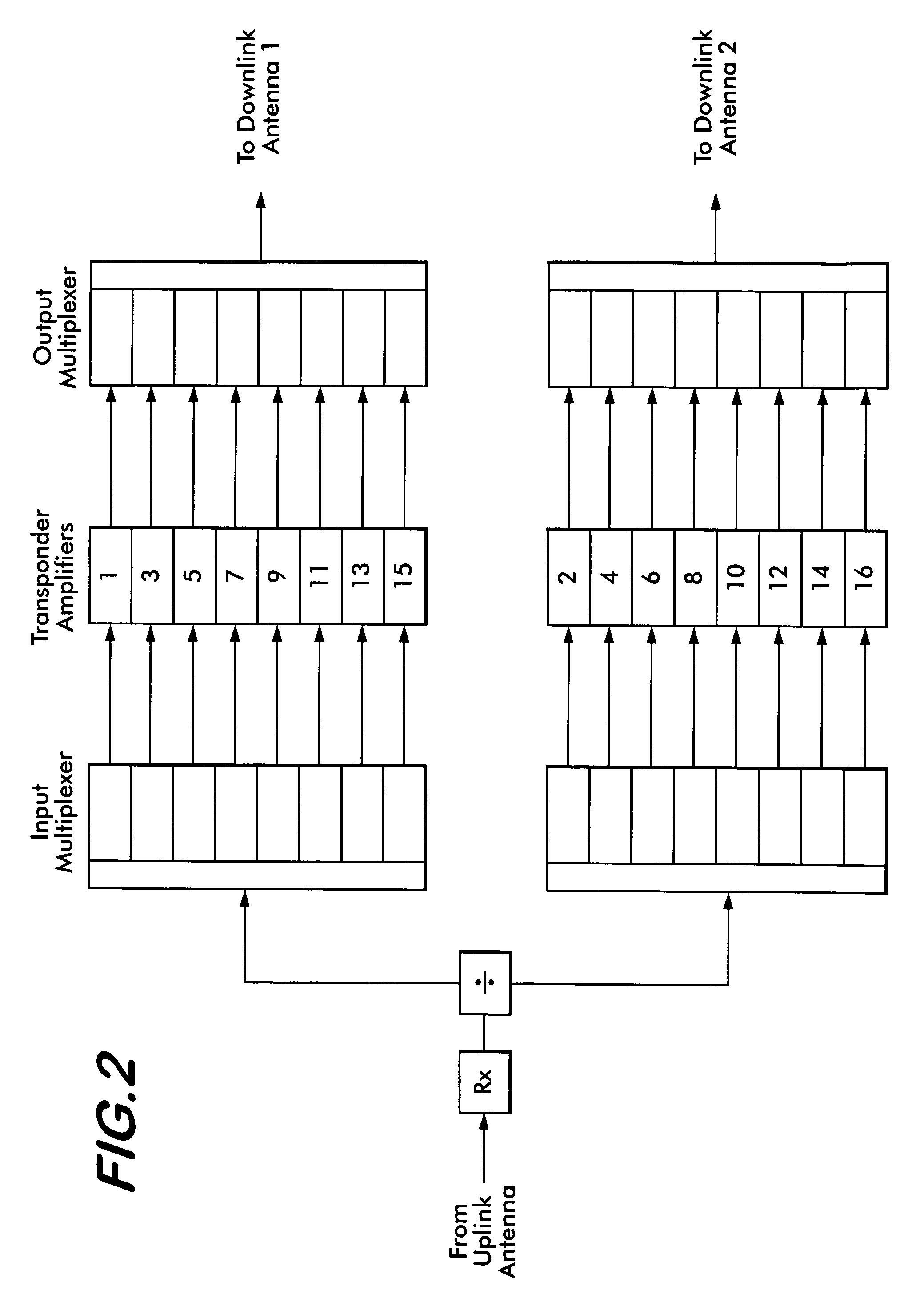Satellite broadcast communication method and system
a communication method and satellite technology, applied in the field of satellite-based communication methods and system design, can solve the problems of inefficient sizing and utilization of r.f. transmit power, constant transmit power and inability to adjust, and high-level transmission techniques, etc., to achieve high reliability, reduce the overall power level of satellites, and cost-effective
- Summary
- Abstract
- Description
- Claims
- Application Information
AI Technical Summary
Benefits of technology
Problems solved by technology
Method used
Image
Examples
example 1
Optimum Antenna Design for the BSS in the 25 / 17 GHz Band
[0044]This example compares two designs, one uses an antenna design typical of the industry today, based on FCC and ITU applications for service and the other is the optimum case, based on the method of the present invention. The two designs assume common parameters which are listed in Table 1.
[0045]
TABLE 1LIST OF ASSUMPTIONS FOR THE TWO DESIGNS.Satellite Location100.5 WRain Availability, %99.9 (99.8 for Miami)Subscriber Antenna, cm45Subscriber Earth Station Noise Temp. dBK20.4 (clear sky conditions)Uplink C / N + I, dB24.8Uplink Antenna, meters6Number of Transponders16 (in two groups of 8)Transponder Bandwidth, MHz26Uplink Frequency, GHz25Downlink Frequency, GHz17.55Uplink Transmitter Loss, dB3Downlink Transmitter Loss, dB2.5Threshold CNR, dB6.90 dB
[0046]Locations or points are either at or near major cities or at locations where the rain intensity is changing. The number of points is selected in order to characterize the antenn...
example 2
Optimum Antenna Design for the BSS in the 17 / 12 GHz Band
[0053]This example compares two designs, one is typical of the industry today, based on FCC and ITU applications for service and the optimum case, based on the method of the present invention. The two designs have common assumptions which are listed in Table 3.
[0054]
TABLE 3LIST OF ASSUMPTIONS OF THE TWO DESIGNS.Satellite Location114.5 WRain Availability, %99.9Subscriber Antenna, cm45Subscriber Earth Station Noise Temp. dBK20.4 (clear sky conditions)Uplink C / N + I, dB25.0Uplink Antenna, m6Number of Transponders16 (in two groups of 8)Transponder Bandwidth, MHz26Uplink Frequency, GHz17.55Downlink Frequency, GHz12.45Uplink Transmitter Loss, dB3Downlink Transmitter Loss, dB2.5Threshold CNR, dB6.90 dB
[0055]Locations or points are either at or near major cities or at locations where the rain intensity is changing. The number of points is selected in order to characterize the antenna performance to sufficient accuracy. Any number of po...
example 3
Comparison of Typical FSS Design in the 30 / 20 GHz Band with the Optimum Design
[0059]The application considered in this example is a Broadband system providing high speed two-way interconnection with the Internet. A return link from the subscriber is required and this is provided, in the example, by a small receive-transmit earth station. This example compares two uplink designs in the 30 GHz FSS band; one is typical of the industry today, based on FCC and ITU applications for service and the optimum case, based on the method of the present invention. In this case, the satellite receive antenna gain over CONUS is shaped in order to conform to the uplink rain attenuation and slant range variations, resulting in all uplink subscribers having the same subscriber antenna, power amplifier and rain availability. The two designs have common assumptions which are listed in Table 5.
[0060]
TABLE 5LIST OF ASSUMPTIONS OF THE TWO DESIGNS.Orbital Location114.5 WRain Availability Objective, %99.8Ass...
PUM
 Login to View More
Login to View More Abstract
Description
Claims
Application Information
 Login to View More
Login to View More - R&D
- Intellectual Property
- Life Sciences
- Materials
- Tech Scout
- Unparalleled Data Quality
- Higher Quality Content
- 60% Fewer Hallucinations
Browse by: Latest US Patents, China's latest patents, Technical Efficacy Thesaurus, Application Domain, Technology Topic, Popular Technical Reports.
© 2025 PatSnap. All rights reserved.Legal|Privacy policy|Modern Slavery Act Transparency Statement|Sitemap|About US| Contact US: help@patsnap.com



